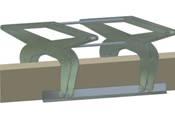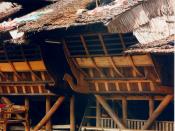1a)-Settlement is the movement of the base of a structure which makes the building move vertically down when movement of different parts of a building is caused by uneven consolidation of the foundation soil.
-Subsidence is the effect of the ground below the foundations of the building that moves away from the foundation as a result of external influences such as dewatering and solution features in chalk and gypsum strata.
1b)â¢Cohesive soils such as clay, are a natural deposit of the finest products of rock weathering. It shows high plasticity, dries slowly, does not crumble and is hard to break up.
â¢Peat soil is decayed vegetable matter of low strength which have a high moisture and acidic content and effective sub drainage.
â¢Non-cohesive soil is a combination of sands and gravels which are rounded and lack of cohesive soils. The soils compress quickly by the expulsion of water.
1c) Foundations are the base on which the structure rests on.
The primary functions of foundations are strength and stability. The requirements of foundations should comply with Building Regulations Approved Document A to safely transmit the combined dead, imposed and wind loads of the building to the ground and, without causing movement of the ground that may affect the stability of any part of the building itself or neighbouring grounds/buildings. They also have to resist ground water, contaminants and moisture.
1d)â¢Pad or slab foundationThese foundations are in the form of a square or rectangular isolated pad of concrete with reinforcement to spread a concentrated load and are mainly used for heavily columns. They consist of a pad mass concrete of uniform thickness. The thickness of the concrete pad should be the same as the projection of the pad around the column to resist the shear stresses of the column on the base...


